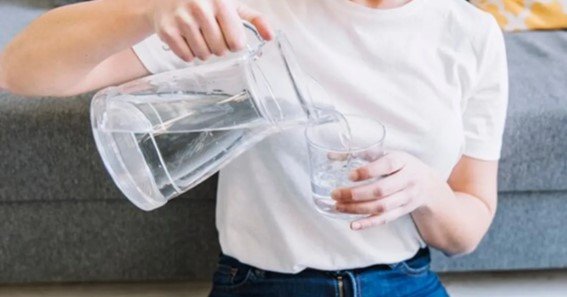Water is essential to life, but what if the water flowing from your taps isn’t as safe as you think? While most of us assume that our household water is clean and safe to drink, there can be hidden dangers lurking in it. Contaminants like bacteria, chemicals, and heavy metals can find their way into your water supply, posing potential health risks to you and your family. Understanding these risks is the first step in ensuring that your water is as pure and healthy as it should be. Let’s dive into the potential hazards and how you can protect your household from them.
The Unexpected Risks in Your Tap Water
Many people take the quality of their tap water for granted, trusting that it’s clean and safe to drink. However, even in areas with well-regulated water supplies, various contaminants can still make their way into your household water. These can range from naturally occurring substances like minerals to man-made pollutants such as pesticides or industrial chemicals.
For instance, many households use water dispensers to ensure they have clean and cool water readily available. While these devices can provide filtered water, they can also give a false sense of security if not properly maintained. Ensuring that all sources of water in your home, including dispensers, are regularly checked and maintained is crucial for your family’s health.
Common Contaminants in Household Water
Understanding what might be lurking in your water supply is key to addressing potential health risks. Here are some common contaminants that might be found in household water:
1. Bacteria and Viruses
Bacteria and viruses are some of the most concerning contaminants in water because they can cause immediate and severe illness. Pathogens like E. coli, Giardia, and Cryptosporidium can enter your water supply through sewage leaks, agricultural runoff, or poorly maintained water systems. Consuming water contaminated with these microorganisms can lead to gastrointestinal issues, fever, and more severe health problems, especially in vulnerable populations like children, the elderly, and those with compromised immune systems.
2. Lead and Heavy Metals
Lead is one of the most dangerous contaminants that can be found in household water, particularly in older homes with lead pipes or plumbing fixtures. Long-term exposure to lead can have serious health effects, particularly in children, where it can cause developmental issues, learning disabilities, and even behavioral problems. Other heavy metals like mercury, arsenic, and cadmium can also find their way into water supplies, often through industrial pollution or natural mineral deposits. These metals can cause a range of health issues, including kidney damage, cancer, and neurological disorders.
3. Chlorine and Disinfection Byproducts
Chlorine is commonly used to disinfect municipal water supplies, killing harmful bacteria and viruses. However, chlorine can react with organic matter in water to form disinfection byproducts (DBPs) like trihalomethanes (THMs) and haloacetic acids (HAAs). Long-term exposure to high levels of DBPs has been linked to an increased risk of cancer and reproductive issues. While chlorine is necessary for making water safe to drink, the potential health risks from DBPs are a concern that warrants attention.
4. Pesticides and Agricultural Runoff
Pesticides and fertilizers used in agriculture can make their way into local water supplies through runoff. Chemicals like atrazine, a common herbicide, can contaminate groundwater and surface water sources. Long-term exposure to these chemicals has been associated with various health risks, including hormone disruption, reproductive issues, and an increased risk of certain cancers. These contaminants are especially prevalent in rural areas where agriculture is a significant part of the local economy.
5. Pharmaceuticals and Personal Care Products
An emerging concern in water quality is the presence of pharmaceuticals and personal care products. These substances enter the water supply when people dispose of medications improperly or when they wash off products like lotions and shampoos. Even in small amounts, these chemicals can affect aquatic life and potentially pose risks to human health. The long-term effects of low-level exposure to these contaminants are still being studied, but they are a growing concern for public health.
Signs Your Water May Be Contaminated
While some water contaminants are tasteless, odorless, and invisible, there are often signs that something might be wrong with your water. Paying attention to these signs can help you identify potential issues early and take action to protect your health.
1. Unusual Taste or Odor
One of the first signs that your water may be contaminated is a change in taste or odor. Water that tastes metallic, bitter, or salty could indicate the presence of heavy metals or other chemicals. Similarly, a strong chlorine smell might suggest high levels of chlorine or DBPs. If your water smells like rotten eggs, it could be a sign of hydrogen sulfide, which can be present in well water.
2. Discoloration
Water that appears cloudy, yellow, brown, or rusty can be a sign of contamination. Cloudy water can indicate the presence of microorganisms or sediment, while yellow or brown water could suggest iron or manganese contamination. Rust-colored water is often a sign of corroded pipes, which could be leaching lead or other metals into your water.
3. Sediment or Particles
If you notice sediment or particles in your water, it could be a sign of deteriorating pipes or a malfunctioning filtration system. Sediment can carry contaminants like bacteria, heavy metals, and other harmful substances, so it’s essential to address this issue promptly.
4. Health Symptoms
If you or your family members experience unexplained health symptoms like gastrointestinal distress, skin irritation, or recurrent infections, your water quality could be to blame. Contaminated water can cause a range of health issues, so it’s important to consider your water source if you’re experiencing ongoing health problems.
Protecting Your Household from Water Contaminants
The good news is that there are several steps you can take to protect your household from the potential health risks associated with contaminated water. Here’s how you can ensure that your water is safe to drink and use:
1. Regularly Test Your Water
One of the most effective ways to monitor your water quality is through regular testing. Home water testing kits are available for a wide range of contaminants, including bacteria, heavy metals, chlorine, and pesticides. Alternatively, you can hire a professional to conduct a comprehensive water analysis. Regular testing helps you identify potential problems early and take corrective action before they pose a serious health risk.
2. Install a Water Filtration System
Installing a water filtration system is a proactive way to ensure that your household water is free from harmful contaminants. There are several types of filtration systems available, including activated carbon filters, reverse osmosis systems, and ultraviolet (UV) purification systems. Each type of system targets different contaminants, so it’s important to choose the one that best suits your needs based on your water quality.
3. Maintain Your Plumbing and Appliances
Regular maintenance of your home’s plumbing system and water-related appliances is essential for preventing contamination. This includes checking for leaks, replacing old pipes, and ensuring that appliances like water heaters and dispensers are cleaned and serviced regularly. Proper maintenance helps prevent contaminants from entering your water supply and ensures that your filtration systems are functioning correctly.
4. Stay Informed About Local Water Quality
Most municipalities provide annual water quality reports that detail the levels of various contaminants in the local water supply. These reports are a valuable resource for understanding the potential risks in your area and taking appropriate action. If you use well water, it’s especially important to stay informed about potential contamination sources, such as nearby agricultural activities or industrial sites.
5. Consider Bottled or Filtered Water
If you’re concerned about the quality of your tap water, consider using bottled or filtered water for drinking and cooking. While this may be more expensive in the long run, it’s a simple and effective way to ensure that you’re consuming clean, safe water. Just be sure to choose high-quality bottled water and replace filter cartridges regularly to maintain their effectiveness.
Taking Charge of Your Water Quality
Water is fundamental to our health, yet it’s easy to overlook the potential risks that may be present in our household water supply. By understanding the common contaminants that can affect water quality and taking proactive steps to monitor and treat your water, you can protect your family from potential health hazards. Regular testing, proper maintenance, and the use of effective filtration systems are all key strategies for ensuring that your water is safe and pure. Remember, the quality of the water you drink, cook with, and bathe in directly impacts your health—so take charge and make sure it’s as clean and safe as possible.






